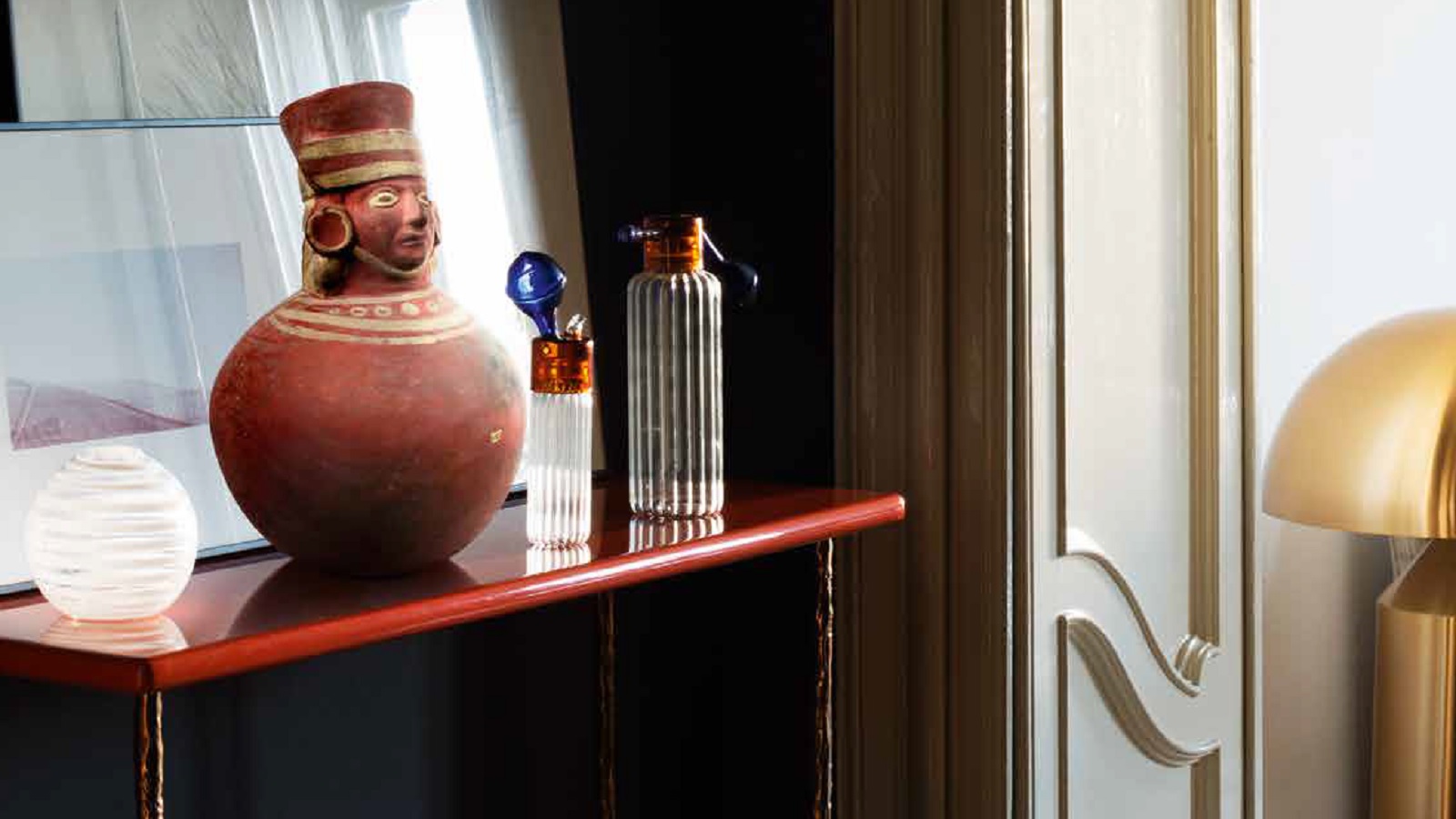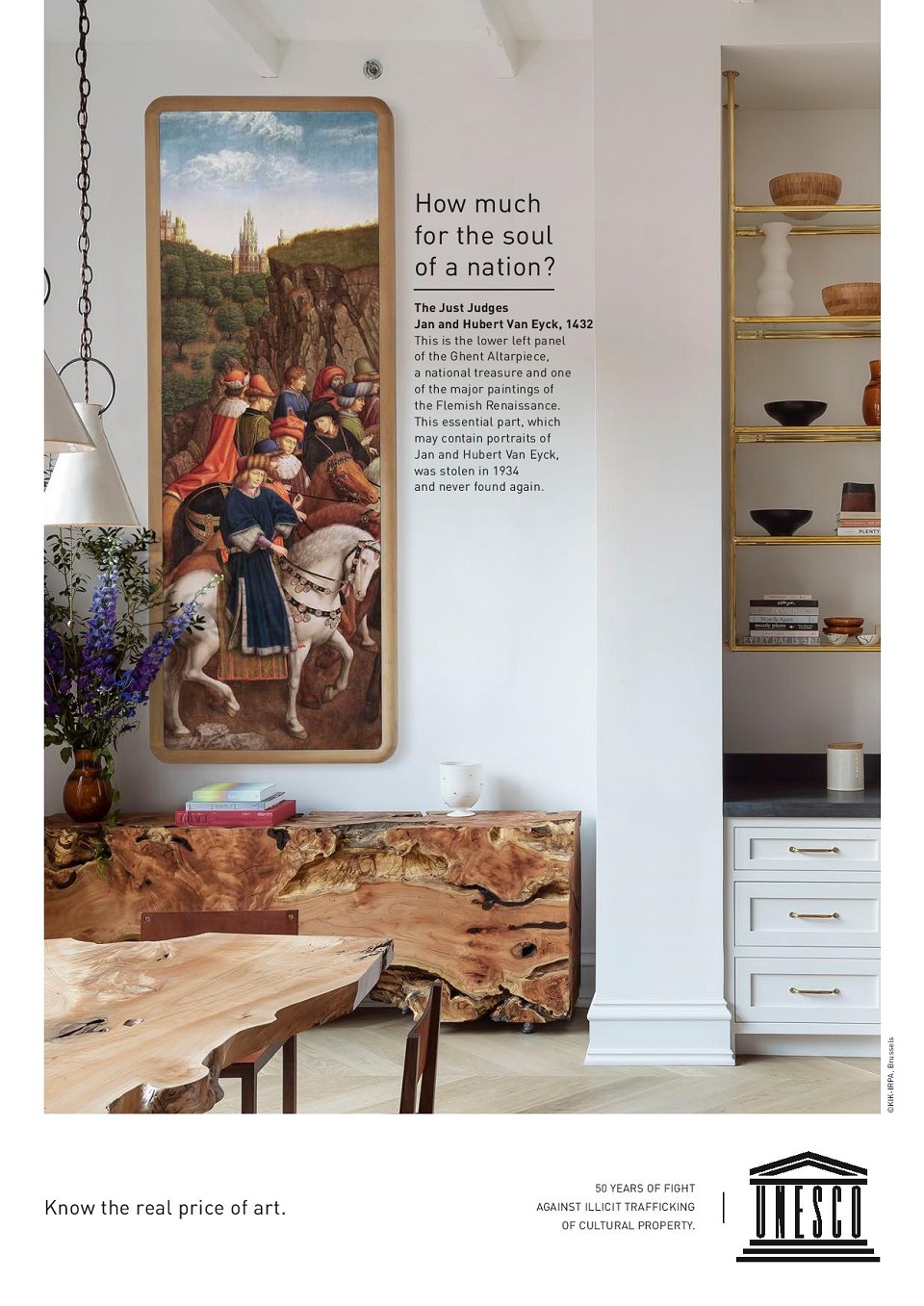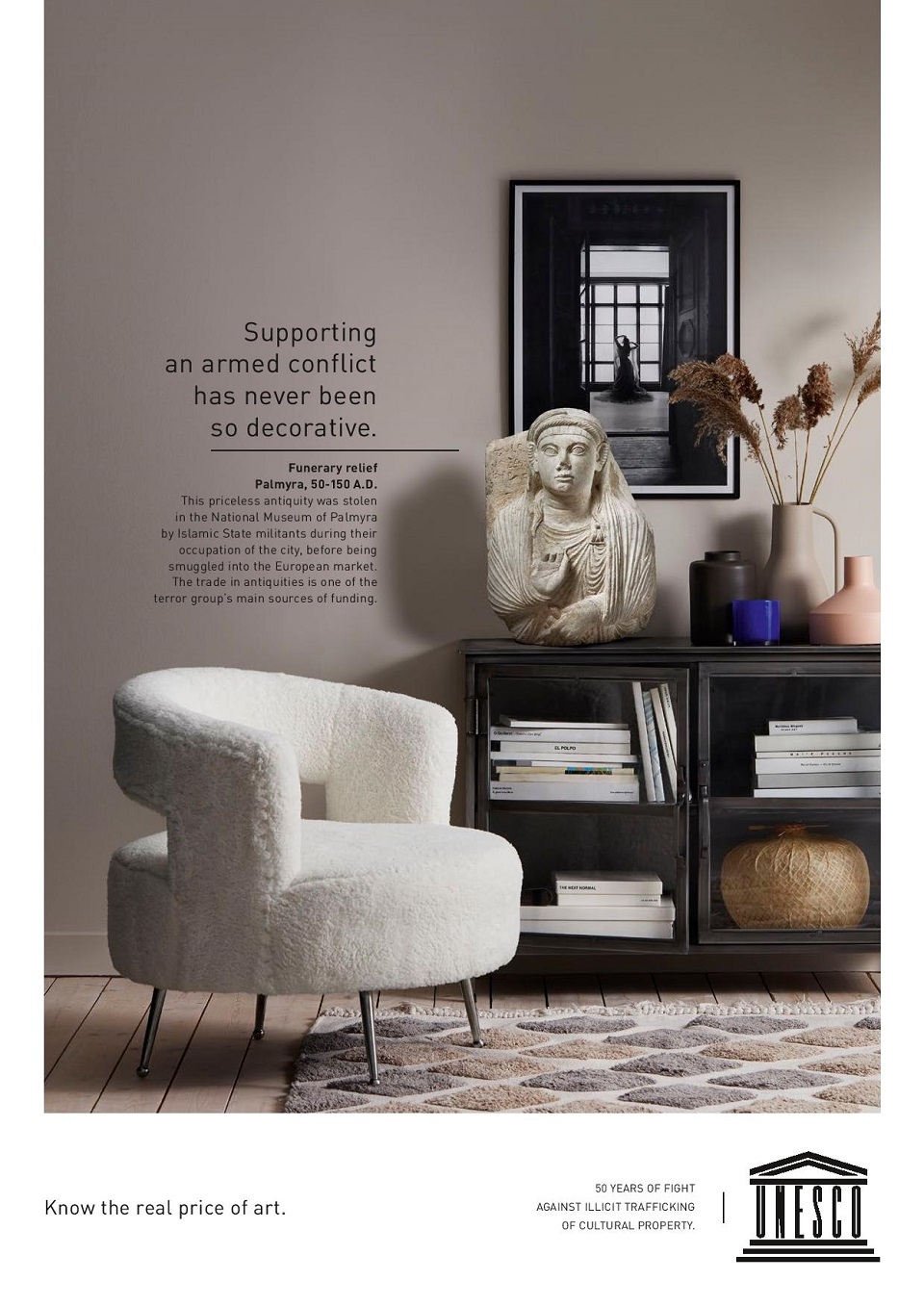For 50 years, UNESCO has been fighting against the illicit trafficking of cultural goods. To mark the 50th anniversary of the 1970 Convention on the Means of Prohibiting and Preventing the Illicit Import, Export, and Transfer of Ownership of Cultural Property, the organization joined hands with DDB Paris to show “The Real Price of Art,” a campaign that reveals the unknown side of art trafficking.
Illicit trading of art goods takes away people’s history, memories, and identity. Aside from stealing these communities’ precious culture, theft, looting, and illicit trafficking of such cultural works fuel organized crime, being a major source of financing terrorist organizations. According to UNESCO, this “industry” is worth around $10 billion each year.
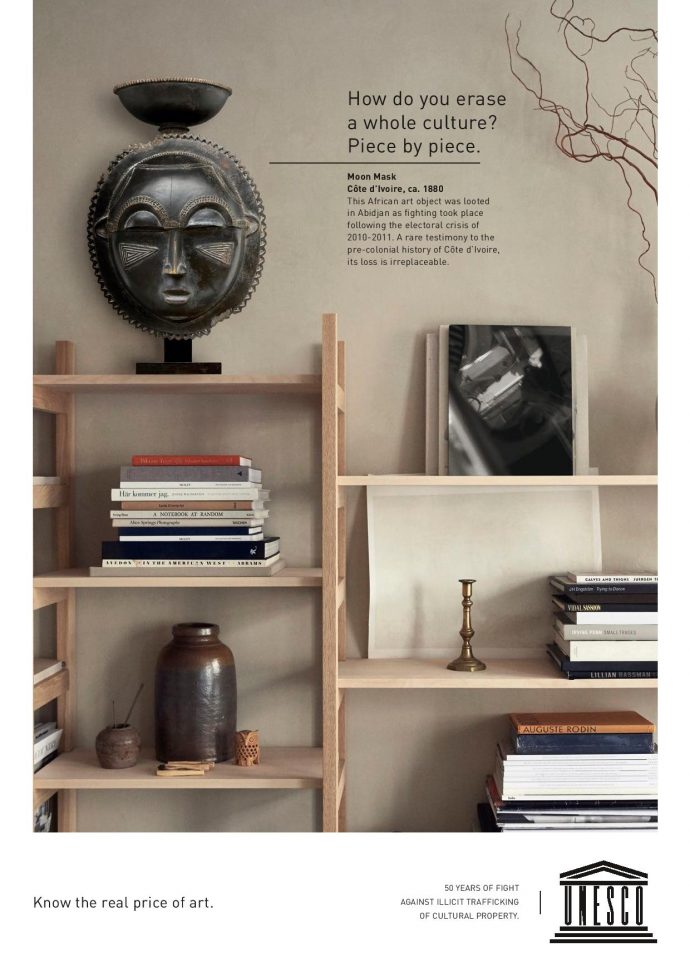
“Illicit trafficking is a blatant theft of the memory of peoples. Raising awareness and calling for the utmost vigilance is necessary to fight this largely under-recognized reality,” says Audrey Azoulay, UNESCO Director-General.
Developed with the Paris-based agency, the campaign focuses on a series of images that portray some works of art. Placed in modern houses, the art pieces contrast sharply with the backgrounds. Although ancient, the new owners found a place for them, either in the library or on tables with shiny surfaces. These works of art have an unmatched value and clearly, they have been through a lot. UNESCO presents their history in the form of posters typical of an interior design magazine, revealing, with each page, the dark story that each piece of art carries within.
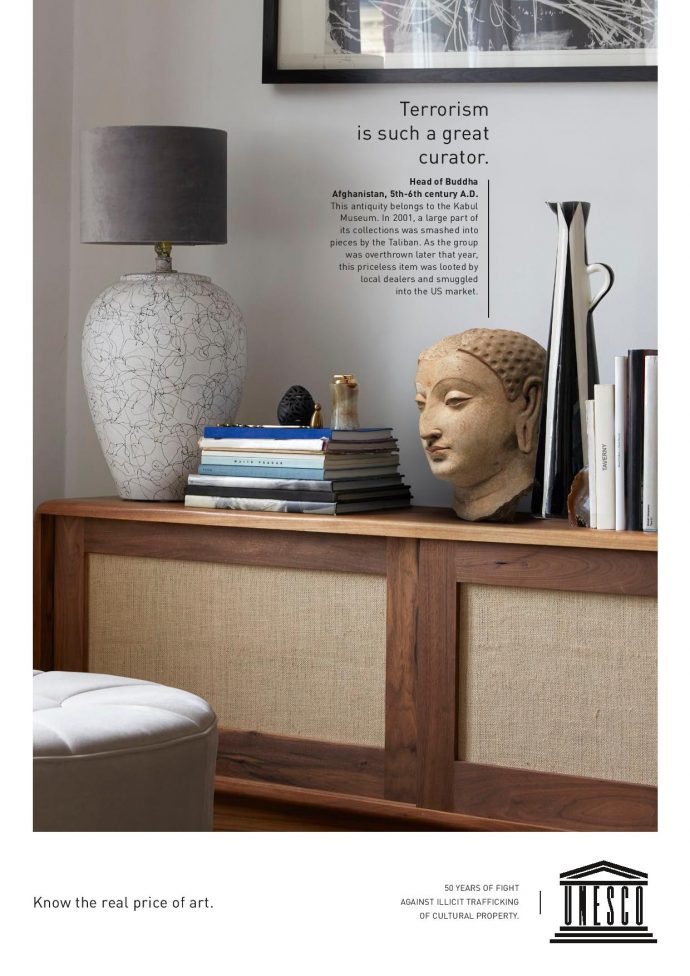
The campaign marks a series of events supporting the anniversary. Among them are the first International Day against Illicit Trafficking in Cultural Property, celebrated on November 14, and an international conference, held during 16 – 18 November, organized in partnership with the Federal Foreign Office of Germany, the European Commission, and the Council of Europe. The summit’s aim is to find solutions in this fight against illicit trafficking. Also, an issue of the UNESCO Courier is dedicated to this subject and is also available online.
